Ormond Printing Co. Ltd
During the 1930s The Ormond Printing Co. Ltd produced playing cards for the Irish market with a distinctive ace of spades, joker and court cards. In 1935 the firm was acquired as a manufacturing facility for Waddington’s cards in Eire.
In January 1935 Waddington’s obtained a financial interest in Dublin by making a part acquisition of the Ormond Printing Company. This enabled the firm to extend their activities in Ireland, particularly by manufacturing playing cards and cartons in Dublin. A new Ace of Spades was introduced, used with Waddington’s standard courts and jokers.
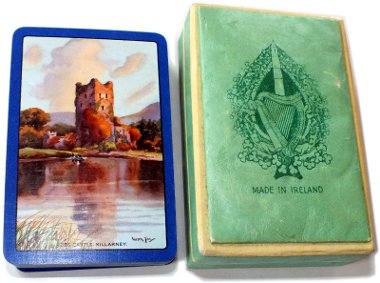
Ormond Printing Co. with Waddington’s courts, c.1935-50
Ross Castle dating from the fourteenth century, stands on a peninsula jutting into Killarney’s Lower Lake. These playing cards feature a painting of Ross Castle signed by travel artist Walter Till, and are presented in a green padded box with the Ormond Ace of Spades design printed on the lid above the legend “Made in Ireland”.
The court cards and Joker are those used by Waddington’s at this time, with six of the courts ‘unturned’.

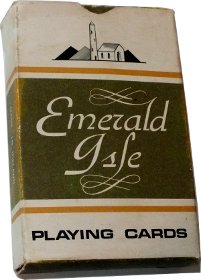
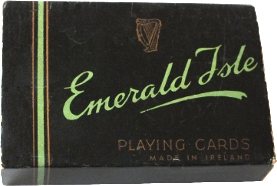
Emerald Isle series
In the first example the cards feature an original painting of Blarney Castle, Co. Cork, with three sheep grazing in the foreground, signed by Walter Till. The court cards and Joker are the same as in the above example, with six of the courts ‘unturned’. The black box has a sliding inner tray.
In the second example (c.1960) the box has been re-designed and the reverse shows a colour photograph of Glengarriff Harbour, Co. Cork. Other packs show Clifden, Co. Galway. The court cards are those formerly used by Goodall & Son which by this time were being used by Waddingtons who printed these cards in their Irish subsidiary.

During the 1960s Waddington's discontinued using their own court card designs in favour of those of Goodall & Son, but retaining the same Joker and Ace of Spades. As a rule, two Aces of Spades were printed with each pack, one with the company name, the other without. Either the named or the anonymous Ace was used, probably depending on the clients' preference. The other Ace was often affixed to the box. In the 1960s Emerald Isle series they also did cards with photographic scenes on the back of: "Trinity College, Dublin", "Custom House, Dublin", "Ross Castle" and "Bunratty Castle, Co Clare".

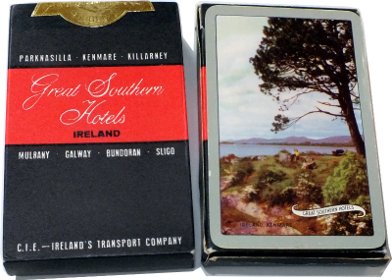

Great Southern Hotels series, c.1945-c.1970
The first box lists the locations of Great Southern Hotels as: Parknasilla • Killarney • Kenmare • Galway • Mulrany • Sligo. Bundoran is added on the second box. Both the examples shown here show a colour photograph of Kenmare on the reverse. The court cards and Joker are to begin with standard Waddington's designs with six of the courts ‘unturned’. Later, around 1970, the former Goodall & Son court cards are used.



Advertising packs are also found with Ormond Printing Co Ace of Spades. Some Ormond Printing Co packs are found with an extra “Guinness is good for you” card inviting the holder to a guided tour of the brewery.
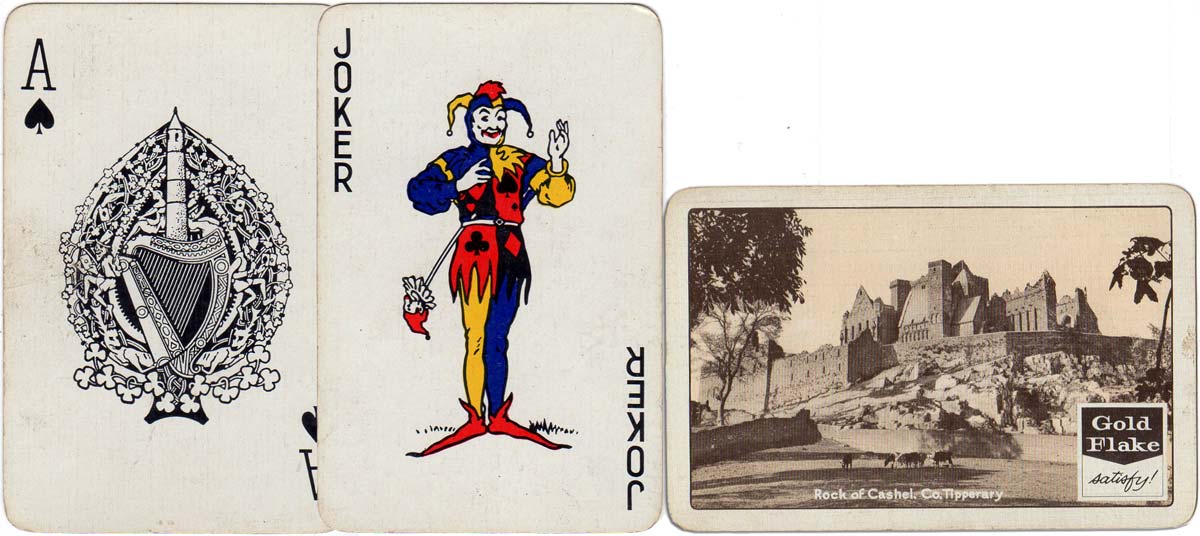
Above: advertising pack for Gold Flake by Ormond (Waddington's) featuring the historic Rock of Cashel, County Tipperary. Courtesy Matt Probert.
Although Waddington's obtained a financial interest in the Ormond Printing Company in 1935 so that they could produce playing cards in Ireland, the Ormond Printing Company Ltd continued working under its own name and amongst other things printed the Jig-Saw Book shown here►
Early Monopoly sets were also manufactured in Ireland by the Ormond Printing Company Limited when Dublin was part of The Irish Free State. It must have been made between 1935 - 1937 due to the Savoy Cinema property titles.

By Simon Wintle
Member since February 01, 1996
Founder and editor of the World of Playing Cards since 1996. He is a former committee member of the IPCS and was graphics editor of The Playing-Card journal for many years. He has lived at various times in Chile, England and Wales and is currently living in Extremadura, Spain. Simon's first limited edition pack of playing cards was a replica of a seventeenth century traditional English pack, which he produced from woodblocks and stencils.
Trending Articles
Popular articles from the past 28 days
Related Articles
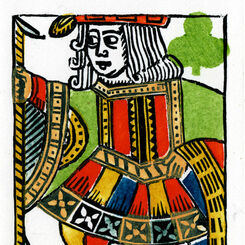
Woodblock and Stencil Jack of Clubs
A limited edition art print of the Jack of Clubs 1984 woodblock joker.

Woodblock and Stencil Jack of Hearts
A limited edition art print of the Jack of Hearts 1984 woodblock joker.

Woodblock and Stencil Joker
A limited edition art print of the 1984 woodblock joker.
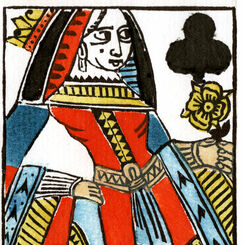
Woodblock and Stencil Queen of Clubs
A limited edition art print of the Queen of Clubs 1984 woodblock joker.

Sweetule Natural History cards
Small cards featuring natural history subjects, given away with packets of sweet cigarettes.
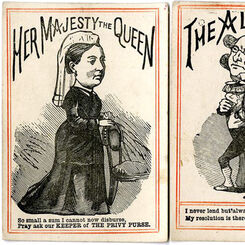
Lend Me Five Shillings
or “Her Majesty’s Privy Purse” - a merry round-the-table game published by D. Ogilvy.
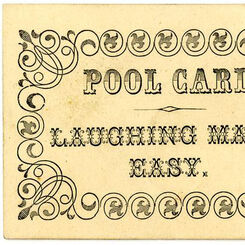
Laughing Made Easy
a Victorian card game published by D. Ogilvy.
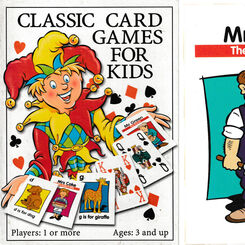
Classic Card Games for Kids
A boxed set of playing cards, Happy Families and an alphabet pack with rules for 22 games.

L Day
Antique cards forming a composite pack by L.Day, Kingdom of Ireland, 1780.

So-Lah – A Game of Music
An early 20th century domino-type musical card game by Goodall.
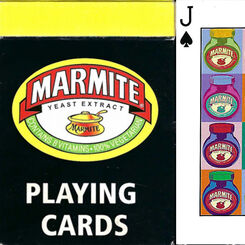
Marmite
Fifty-Four images celebrating a UK savoury spread, that has been around one hundred and twenty two y...
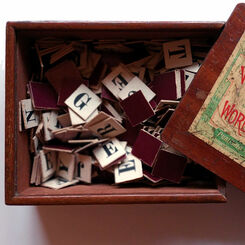
Word Making and Word Taking
How crossword and spelling games became popular.
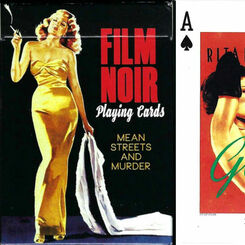
Film Noir
A deck of 55 cards, celebrating hard boiled heroes, wise-cracking women, mean streets, guns and gums...

Science Fiction
A deck of 55 cards, celebrating a time when Science Fiction truly was, Science Fiction.
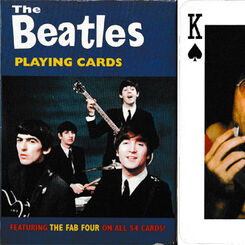
The Beatles playing cards
Two packs featuring photos of The Beatles issued by the same publisher in 2004 and 2005.

Costume Playing Cards
Four centuries of costumes from the Costume Court at the Victoria and Albert Museum.
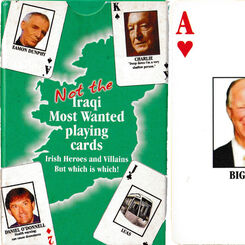
Not the Iraqi Most Wanted playing cards
Fifty-five Irish heroes and villains, some ancient but mostly modern.
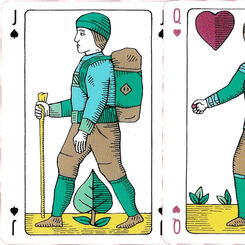
Commoners playing cards
Created by Ian Cumpstey dedicated to the common land and the countryside.

Liber Ludorum
Liber Ludorum playing cards created by Ian Cumpstey in the insular style, United Kingdom, 2019.

Pike and Clover playing cards
Pike and Clover playing cards created by Ian Cumpstey, Cumbria, UK, 2018.
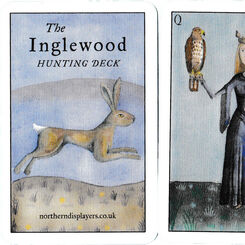
Inglewood Hunting Deck
Inglewood Hunting Deck created by Ian Cumpstey, United Kingdom, 2023.
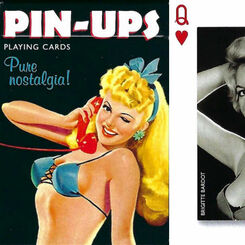
Pin-Ups
A deck of 55 cards celebrating a golden age of cheeky, naughty, bold and curvy ladies in film.
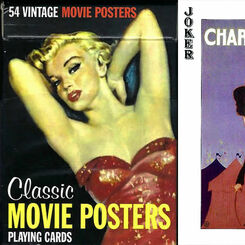
Classic Movie Posters
A deck of 55 cards presenting vintage classic movies and their stars.

That’s Entertainment
A deck of 55 cards celebrating 20th Century vaudeville, musicals and cabaret.
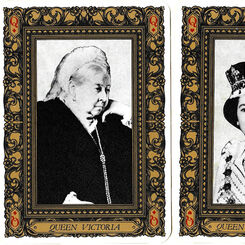
British Monarchs
Commemorating the royal wedding of Charles, Prince of Wales to Lady Diana Spencer on the 29th
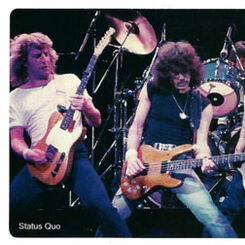
Rock & Pop Legends
Stunning photos of a selection of US and UK music artists.
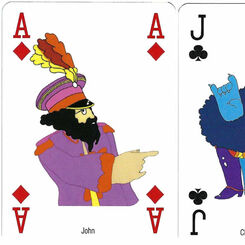
The Beatles • Yellow Submarine
A colourful deck celebrating the 1968 animated feature film based on the Lennon/McCartney song of th...

Dutch Court playing cards
Games & Print Services’ version of the Dutch pattern.

Past Masters’ Association Presentation Pack
The Worshipful Company of Makers of Playing Cards Past Masters’ Association Presentation Pack, 2013....
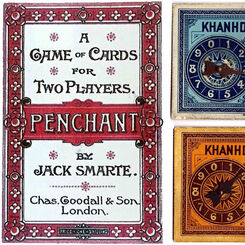
The Search for New Games in the late 19th century
A few new games survived and are still around today; most came and went and are only witnessed in th...
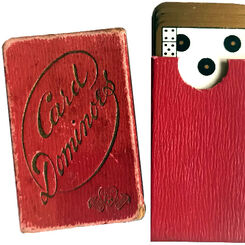
Miniature Card Dominoes
A miniature set of Goodall domino cards (5.9 x 3.5 cms) still in perfect condition.
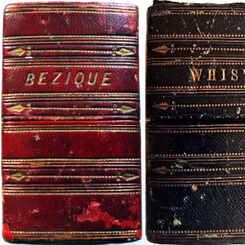
T. Drayton & Son
Bezique and Whist boxed sets by T. Drayton & Son, London, c.1875.

Colour doodle deck
“1952-2002 commemorative deck” customised with doodles by an uncredited artist, UK, 2011.

Alice in Wonderland: we’re all mad here
Alice in Wonderland themed playing cards, UK, 2020.
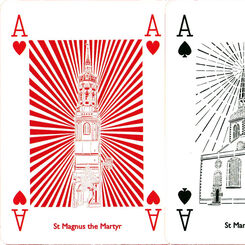
Wren 300 playing cards
Papercuts by Chloe Campbell of the 52 Wren churches in the City of London.
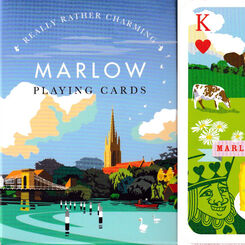
Marlow playing cards
Visitor attractions and businesses to be found in Marlow, Buckinghamshire.

Playing Politics 2010
“Playing Politics ’10: With no expenses spared” featuring caricatures by Oliver Preston, published b...
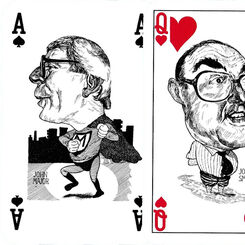
Playing Politics ’92: Pack of lies
Playing Politics ’92: Pack of lies with caricatures by Grant Robertson, UK.

B-Deck
“B-Deck” scurrilous playing cards poking fun at a former UK prime minister.

Winstanley Geographical cards
Facsimile of Winstanley’s Geographical cards produced by Harold & Virginia Wayland, 1967.

Meal Tub Plot
Meal Tub Plot playing cards [facsimile] with 17th century sketches by Francis Barlow.

Golf playing cards
Golf playing cards published by Marks & Spencer, UK.
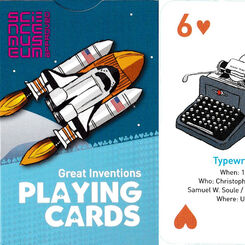
Great inventions playing cards
Great inventions playing cards designed by Gary Wyatt, United Kingdom, 2011.
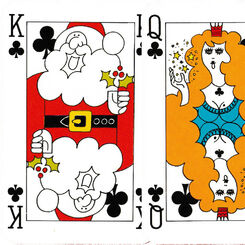
Christmas 1980 playing cards
Festive courts on a Waddingtons pack designed to celebrate Christmas 1980.


